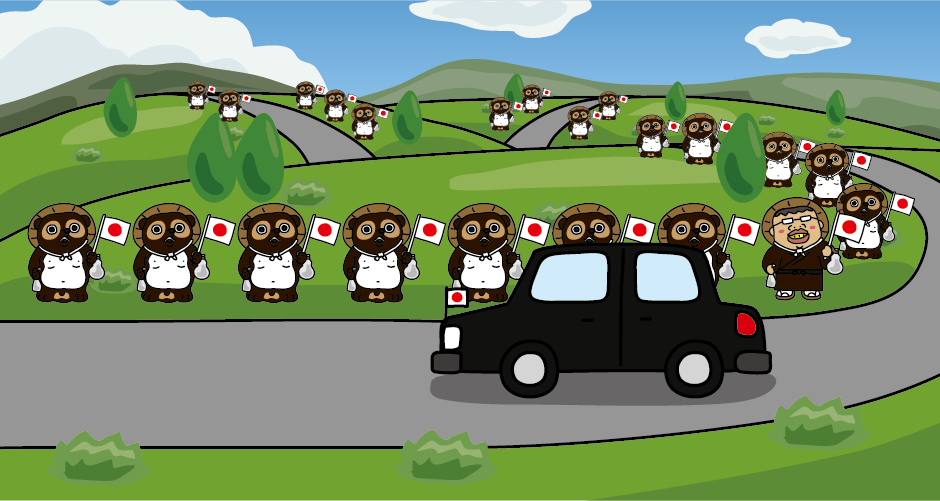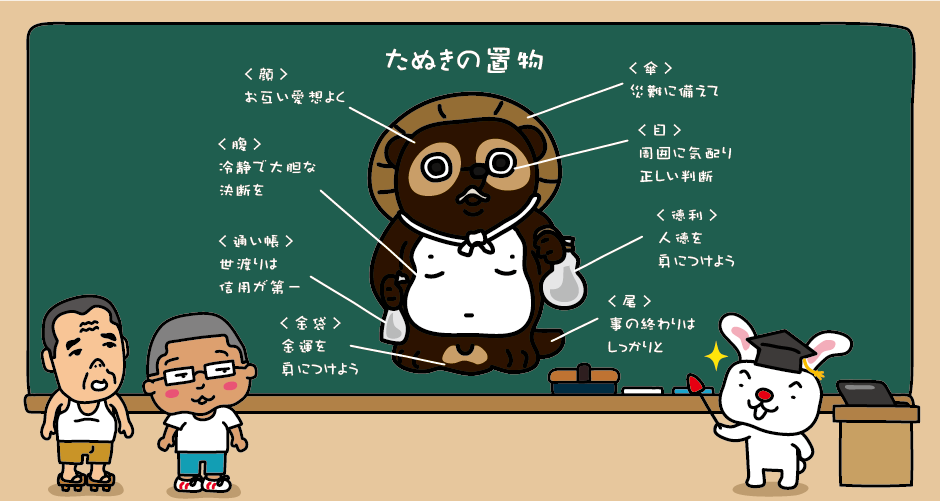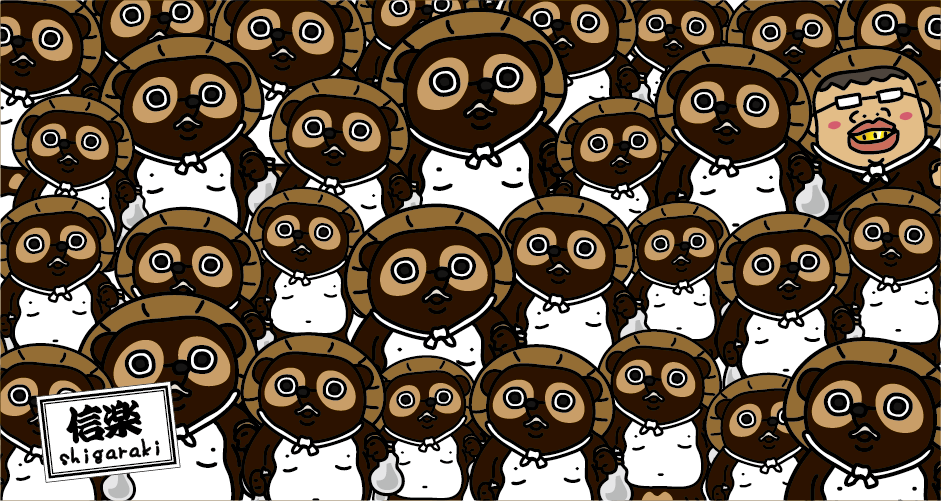Why are the balls of “Pottery Raccoon Dog Statue” of Shigaraki ware so big? Let me introduce eight hidden meanings of the raccoon dog statue!
Shigaraki is an area located in the western part of Koka City, the southernmost part of Shiga Prefecture. The west of Koka City is neighboring Kyoto and the south is neighboring the Iga City of Mie Prefecture. During the Nara period (mid 8th century), Emperor Shomu placed the capital in Shigaraki for only 3 years.
Shigaraki is also famous for its teas (Asamiya tea) and potteries (Shigaraki ware). “Asamiya tea” is one of the oldest tea of Japan which has been cultivated for over 1,200 years and also have been dedicated to successive Emperors. “Shigaraki ware” is pottery that has a history from the Kamakura period and also it is considered as one of the six ancient kilns in Japan.

Because Shigaraki was close to Kyoto, Shigaraki ware was developed with the growth of the tea ceremony since the Muromachi period (14th century). Especially tea potteries of Shigaraki ware were highly valued by nobility and highly educated people.

It is said that the famous Shigaraki ware “Pottery Raccoon Dog Statue” has been made for the first time in the early Meiji period. In 1951, when Emperor Showa visited Shigaraki, he saw “Pottery Raccoon Dog Statue” with the small national flag lined on the street. He enjoyed it and created haiku and his haiku was introduced by the newspaper. Since then, Shigaraki has become known as the “Pottery Raccoon Dog Statue” of Shigaraki ware.

“Shigaraki Ware Raccoon Dog Statue” is popular as a lucky charm for a prosperous business, but for raccoon dog’s “bamboo hat”, “big eyes”, “face”, “tokkuri (Japanese sake bottle)”, “passbook”, “big stomach”, “big testis” and “tail” have different meanings.
“Bamboo hat”…To be prepared to protect yourself from bad things and disasters.
“Big eyes”…To make a good judgment by looking around closely. Do not forget kindness to people around you.
“Face”…Always keep a smile on your face.
“Tokkuri (Japanese sake bottle)”…To acquire a person’s virtues (Toku in Japanese).
“Passbook”…Trust always comes first. Keep the promises you made.
“Big stomach”…Have calmness and boldness in yourself.
“Big testis”…Make one’s behavior and way of thinking to attract more money. The testis or balls are Kintama in Japanese. “Kin” means gold in Japanese and it is often associated with having good luck with money.
“Tail”…It will all come good in the end. Do not stop doing something halfway.

It is said that in 805, the founder of Hienzan Enryakuji, Saicho (Dengyodaishi) brought tea seeds back from China, planted it on Mt. Iwatani of Shigaraki, dedicated its tea leaves to the Imperial Court in 815 and it was the beginning of the Japanese tea culture.
In the Edo period, Matsuo Basho stopped by Shigaraki and made a haiku of “Kikakurete Chatsumimo kikuya Hototobisu (Behind trees, tea pickers also listen to the song of cuckoo)”. (The hometown of Matsuo Basho is the Iga region of Mie Prefecture, which is neighbor to the Koka region.)
Access to Shigaraki
It takes about 2 hours and 15 minutes from JR Tokyo Station to JR Kyoto Station by Tokaido Shinkansen. From JR Kyoto Station, transfer to JR Tokaido Sanyo Main Line (Special Rapid) to JR Kusatsu Station in about about 20 minutes. Transfer to the JR Kusatsu Line at JR Kusatsu Station and get to JR Kibukawa Station in about 25 minutes. Transfer to the Shigaraki Kogen Railway Line at JR Kibukawa Station and it takes about 25 minutes to Shigaraki Station on the Shigaraki Kogen Railway. Get off at Shigaraki Station.
